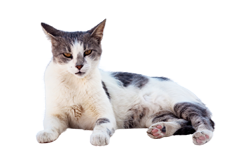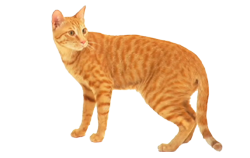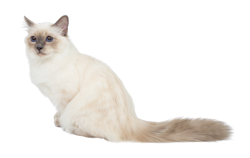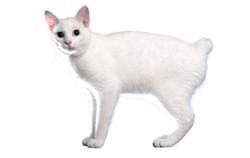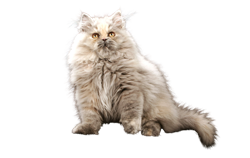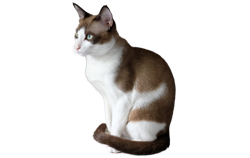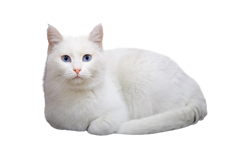Cat Breeds
Join Our Newsletter
Everything You Need To Know About Your Breed
In Just Minutes, Discover the Perfect Cat Breed Tailored to Your Lifestyle and Needs!
Jump to Your Breed:
Below is a well polished guide on the most popular cat breeds listed in alphabetical order. Find your favorite breed by clicking on the first letter of the breed that your breed starts with or scroll down and find your breed by picture.
Frequently Asked Questions:
What Are The Different Cat Breeds?
What Are The Different Cat Breeds?
It's a well-known fact that dog breeds are numerous and varied, and cats seem to be sort of... one large family. Few people seem to realize that cats are just as genetically diverse as their canine counterparts! The truth is, there are so many cat breeds around the world that all differ from each other in terms of appearance and personality.
Just like dogs, breeders develop cat breeds very carefully, preserving certain traits that make that breed special. For example, Siamese are svelte and dainty looking but often come with a loud voice. Persians are fluffy teddy bears that are known to be homebodies.
Here's a closer look at some of the most popular cat breeds in the world! Which cat breed is right for you? Find out here.
How Many Cat Breeds Are There?
How Many Cat Breeds Are There?
This varies depending on who you ask. The Cat Fanciers' Association recognizes 45 pedigreed breeds — the International Cat Association recognizes 71.
Some of the breeds recognized by TICA are not recognized by the CFA. This is because the breeds are "hybrids," or they have controversial genetics that makes some organizations question the cat's quality of life.
An example of one of these controversial breeds is the Bambino, which is a cross between the Munchkin and Sphynx. The Sphynx is hairless, so their skin is more likely to become dirty or irritated. The Munchkin has extremely stubby legs, making it harder for them to climb and jump.
These potential health concerns, and the cat's tiny breeding pool, make some organizations wary of officially registering the Bambino and other breeds with similar mutations.
What Are The Different Types of Cats?
What Are The Different Types of Cats?
There are three types of cat breeds: natural, cross-bred, and mutated. Natural breeds originated on their own, while cross-bred lines formed from intentional breeding efforts. Mutated breeds result from selectively breeding cats with interesting genetic quirks.
Natural
Natural cat breeds are purebred cats that formed on their own without the assistance of organized breeding. While breeders may continue the breed's pedigree, the lineages formed without any human intervention.
A lesser-known example of a natural cat breed is the Aegean Cat. These cats originated on the Cycladic Islands of Greece. This breed is one of the oldest in the world, and it hasn't really changed much throughout its existence. That's because breeders have still barely intervened to this day.
These big, muscular cats have semi-long fur that's often bi-color, including large patches of white. Their eyes are yellow, green, or blue. Families started adopting these feral cats from the street for their social nature and natural beauty.
Here are other breeds that naturally occurred in their respective countries without much human intervention:
- Abyssinian (unknown origin, most likely Southeast Asia)
- Agia Eleni/St. Helen (Turkey)
- American Shorthair (United States)
- Antipodean (New Zealand and Australia)
- Arabian Mau (United Arab Emirates)
- Birman (probably Burma)
- Burmese (Myanmar)
- British Shorthair (UK)
- Cape Breton Bobtail (Nova Scotia)
- Chartreux (France, possibly brought from Syria originally)
- Celtic Shorthair/European Shorthair (Sweden)
- Dragon Li (China)
- Egyptian Mau (Egypt)
- Korat (Thailand)
- Kusing Buso (Indonesia)
- Maine Coon (United States)
- Mexican (Mexico – originally brought by Spanish Conquistadores)
- Nepali (Nepal)
- Norwegian Forest Cat (Norway)
- Persian (Iran)
- Rugkatt (Sweden)
- Russian Blue (Russia)
- Siberian (Russia)
- Singapura (Singapore)
- Sokoke (Kenya)
- Somali (a long-haired Abyssinian, time and place of first appearance unknown)
- Turkish Angora (Turkey)
- Turkish Van (Turkey)
Cross-Bred
Many cat breeds are crosses between two or more established lines. Did you know that a surprising amount of these breeds developed by selectively crossing cats with the Siamese breed? These include:
- American Bobtail (Siamese/Ragdoll/Birman/ Himalayan/domestic)
- Balinese (a long-haired Siamese)
- California Spangled Cat (Siamese/Angora/British and American Shorthair/Abyssinian/Manx/domestic)
- Colourpoint Shorthair (Siamese/British and American Shorthair)
- Havana Brown (Siamese/black British or American Shorthair)
- Himalayan (Siamese/Persian)
- Javanese (Oriental Shorthair/Balinese)
- Jungala (Ocicat/domestic)
- Ocicat (Siamese/Abyssinian/American Shorthair)
- Oriental Longhair (Oriental Shorthair/Balinese)
- Oriental Shorthair (Siamese/Abyssinian/American Shorthair/Burmese/Russian Blue/domestic)
- Ragamuffin (Ragdoll/Himalayan/Persian/domestic)
- Snowshoe (Siamese/American Shorthair)
- Templecat (Birman/Oriental)
- Tonkinese (Siamese/Burmese)
Here are the cat breeds crossed between two previously existing breeds aside from Siamese and Siamese-derived breeds:
- Australian Mist (Abyssinian/Burmese/domestic)
- Australian Tiffanie (Chinchilla/Burmilla)
- Bombay (Burmese/American Shorthair)
- Burmilla (Burmese/Chinchilla)
- Chantilly/Tiffany (non-purebreds)
- Exotic (Persian/American Shorthair)
- Mandalay (Abyssinian/Burmese)
- Nebelung (started with strays of unknown origin, continued with Russian Blue)
- Tiffanie (Burmese/Persian)
Breeders keep appearance and personality in mind when they do their work. For example, the Tonkinese has the intelligence of a Siamese and the friendliness of a Burmese. The Burmilla has the sleek muscular body of the Burmese and the plush white coat of the Chincilla.
An interesting new breed is currently underway. The American Kueda is being developed with rodent hunting in mind. Breeders are choosing all of the hardiest and most skilled barn cats to create the line. The American Kueda is sure to be a mouse-catching machine!
Hybrid and Mutations
Many recent breeds are the result of mutations. When a kitten is born with an interesting mutation, like curled ears or short legs, breeders will selectively breed cats with this gene to continue creating litters with the desired mutation.
Some of the most popular breeds with mutations are the Scottish Fold and American Curl, known for their ears. You will also often hear about the Sphynx and Devon Rex, which are bred for their unique — or lack — of fur.
In the past few decades, breeders have taken multiple mutated cat breeds and attempted to combine them to create newer breeds. This includes the Minskin and the Highlander.
What Was the First Cat Breed?
What Was the First Cat Breed?
It's impossible to know for sure which cat breed is truly the oldest since cats have been with us for so long. But many people believe it's the Egyptian Mau. This sleek, spotted cat was owned by people in Egypt far before 1500 B.C.E. Mummified Egyptian Mau cats were found alongside pharaohs from this time. Cats were said to guide the deceased rulers in the afterlife.
But, it's possible Egyptian Maus were even around as far back as 10,000 B.C.E. That's because there is evidence of the Egyptian Mau in ancient writings, pictures, and hieroglyphs. In these images, the Egyptian Mau is presented as a noble companion.
What is the Most Common Type of Cat Breed?
What is the Most Common Type of Cat Breed?
The CFA tracks which cat breeds are the most popular in the United States. Keep in mind that this list represents the most adopted cats from reputable, registered breeders.
- Exotic Shorthair: This kitty is basically a short-haired Persian. It has the same snubbed nose without the added grooming requirements of the high-maintenance Persian. The Exotic is easy-going and lovable, making it a great snuggle partner for any family.
- Ragdoll: This breed is gorgeous, with vivid blue eyes and a plush seal-point coat. But this big breed is not only popular because of its appearance. The Ragdoll is cuddly beyond belief. This is a cat you can carry around and constantly cuddle with.
- British Shorthair: This cat has become quite popular thanks to its friendly nature, plush coat, and round features. It has a round face with wide eyes and a stocky body.
- Persian: The Persian may have a high-maintenance coat, but they have a very laid-back personality. This is a cat that loves nothing more than lounging around with you on the couch.
- Maine Coon: This is one of the largest cat breeds in the world with a personality to match. This smart cat can learn tricks and act like a dog. It's loyal, friendly, and basically the overseer of everything happening in the home.
What is the Rarest Cat Breed?
What is the Rarest Cat Breed?
One of the rarest (and priciest at $125,000), only about 100 Ashera were sold since the breed came into existence in 2006. The Ashera is said to be an African Serval, an Asian Leopard, and domestic cat hybrid. While beautiful, the breed is no longer on sale. A Savannah breeder called out the vendor, claiming the Asheras were just his cats being upsold with a new name and identity!
Here are some other rare breeds that are still available today:
- Kurilian Bobtail: This long-haired, bobtailed cat is rarely spotted outside of Russia. TICA states that there are only 100 Kurilian Bobtails in the United States.
- Norwegian Forest Cat: Like the Maine Coon, this cat breed is also incredibly large and fluffy. But since the Maine Coon is already so popular in its native region, you won't often see the Norwegian Forest Cat in America.
- Minskin: Half Munchkin, half Sphynx, this hybrid mutation breed is pretty new. TICA recognized it in 2008, and it's continuing to gain popularity. Breeders are still working to ensure the line is healthy.
- Egyptian Mau: According to the CFA, only 6,700 Egyptian Mau were registered a few years ago. This ancient breed is popular in Egypt and continues to have fans all over the world. But it's not as popular as some of the more common breeds found in households in North America.
- Turkish Van: The CFA states that this cat is "relatively rare" even in areas where it's been bred for centuries. Intelligent and energetic, the Turkish Van loves water. It's a "regional treasure" in Turkey, which prompted the government to limit its exportation to other countries.
How Do I Identify What Type of Breed My Cat Is?
How Do I Identify What Type of Breed My Cat Is?
It's fun to look at your cat and compare its features to breeds. For example, many people with big, fluffy cats often say their cat is "half Maine Coon."
The reality is that cat breeds are very carefully bred and registered, meaning unless your cat has papers, it's most likely just a domestic short or longhair.
If you truly believe your cat is at least part purebred, there are some things to look for. First, study their size. Many cat breeds have a very specific size in their breed standards with the CFA. A Maine Coon isn't just "big." It's 13 to 18 pounds (for a male).
Next, look at the fur. A Maine Coon isn't just "fluffy." It should have a coat that's "heavy and shaggy." It should be shorter on the shoulders and longer on the stomach.
The next thing to study is your cat's facial features. Most cat breeds have very specific standards for eyes, muzzles, ears, and head shape. You'll notice that purebred Maine Coons have a very regal appearance thanks to a square muzzle and strong chin. The ears should be large and well-tufted, and the eyes are typically oval in shape.
Maybe your cat has a mutation or another very distinct trait. Think the Persian's snubbed nose, the Scottish Fold's curled ears, or the LaPerm's wavy fur. These are rare traits that breeders purposely maintain, so this could be a sign that your cat has certain genes.
In addition to physical appearance, you can also study your cat's personality. Most cat breeds carry desired traits, like being friendly, social, or cuddly.
Even if your cat isn't purebred or a cross, it's still special, beautiful, and perfect! Cats don't need to be a certain breed to be amazing family members.
Which Cat Breed is Right for You?
Which Cat Breed is Right for You?
It can be hard to choose a cat breed when they are all so adorable in their own way. But we can help give you some ideas!
Do you like activity? Or is your couch more appealing?
- Active: If your family loves to play for hours, you should look into more energetic breeds that require more exercise, playtime, and attention. Consider: Bengal, Siamese, Toyger, or Manx. While you're at it, check out some CBD catnip spray to turn up the playtime even more!
- Chill: If you prefer to have a cat that will join you on the couch after a long day of work or cuddle with you while you're in bed, you should adopt a cat that won't become mischievous if not given enough playtime. Consider: Exotic Shorthair, Ragdoll, or British Shorthair.
Is your family experienced with cats?
- Willing to do more work: If you don't mind a cat breed that requires more grooming and special care, there are several loving, social kitties that will thrive in your home. Consider: Sphynx, Persian, Peterbald, and LaPerm.
- New to owning a cat: If you don't have much experience taking care of a cat, you might not want to take on the special needs of the cats above. Instead, look for a breed that won't require extra work to keep them happy and healthy. Consider: Maine Coon, Exotic Shorthair, American Shorthair, or Ragdoll.
Are you a homebody? Or always on the move?
- Always home: Many cats become destructive and anxious when left alone (even with other cats). If you work from home or don't often go on vacation, you can look at cats that thrive by your side. Consider: Siamese, Japanese Bobtail, Oriental Shorthair, Ocicat, or Somali.
- Very busy: If you will be gone for eight or more hours each day or go on vacations quite often, you will want to consider a second or third cat to make sure your cat doesn't get lonely and depressed. You should also look into ways to spend more time with your cat. Some cats tolerate being alone better than others. Consider: Persian, British Shorthair, Scottish Fold, and Chartreux.
Cat Breeds Final Thoughts
Cat Breeds Final Thoughts
Cats are amazing. They are loving, funny, weird, and absolutely adorable! We love all cats, but there's something fascinating about cat breeds. These felines are bred to specific standards, setting them apart from other cats. That's how you end up with the Ragdoll, who can flop no matter what (even upside down).
It can be hard to decide which cat breed is right for you. Consider the cat's care requirements and social needs to narrow it down. There's a perfect cat breed out there for your family! The right cat will make a fabulous addition to your home, quickly becoming a loving part of the family.


American Wirehair (N/A)


Brazilian Shorthair (N/A)

British Longhair (N/A)

Burmese (N/A)
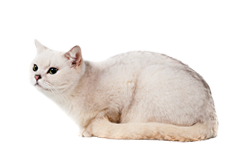
Burmilla (N/A)


California Spangled (N/A)

Chartreux (N/A)

Chausie (N/A)
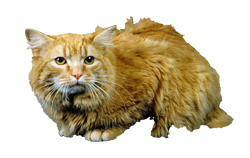
Cymric (N/A)


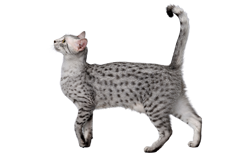
Egyptian Mau (N/A)


German Rex (N/A)


Havana Brown (N/A)

Highlander (N/A)
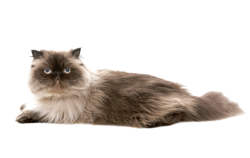
Himalayan (N/A)


Javanese (N/A)


Khao Manee (N/A)

Korat (N/A)


Lambkin (N/A)

Lykoi (N/A)

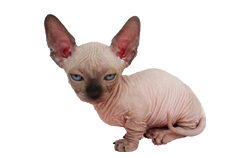
Minksin (N/A)


Napoleon (N/A)

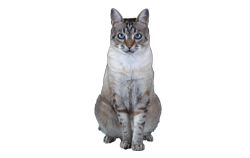
Ojos Azules (N/A)

Oregon Rex (N/A)


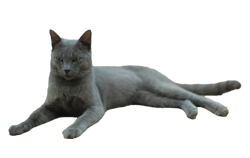
Raas (N/A)


Serengeti (N/A)

Siberian (N/A)

Sokoke (N/A)


Toybob (N/A)








![Probiotics For Dogs [Soft Chews] - HolistaPet](http://www.holistapet.com/cdn/shop/files/Probiotic-Infographic-1_472d7a29-e30c-435a-9638-1365d8c3a9f9.jpg?v=1725384841&width=104)
















